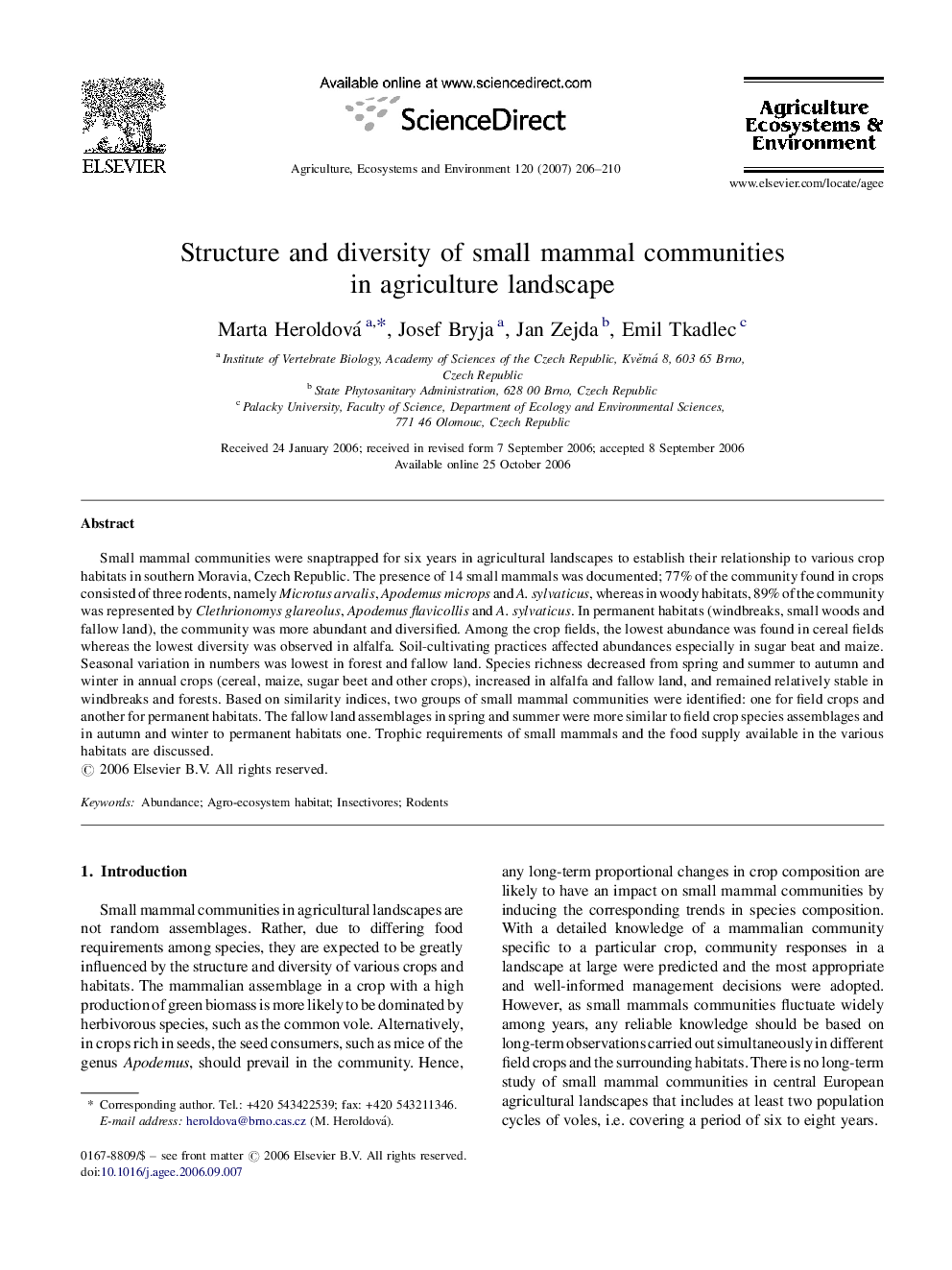| Article ID | Journal | Published Year | Pages | File Type |
|---|---|---|---|---|
| 2415601 | Agriculture, Ecosystems & Environment | 2007 | 5 Pages |
Small mammal communities were snaptrapped for six years in agricultural landscapes to establish their relationship to various crop habitats in southern Moravia, Czech Republic. The presence of 14 small mammals was documented; 77% of the community found in crops consisted of three rodents, namely Microtus arvalis, Apodemus microps and A. sylvaticus, whereas in woody habitats, 89% of the community was represented by Clethrionomys glareolus, Apodemus flavicollis and A. sylvaticus. In permanent habitats (windbreaks, small woods and fallow land), the community was more abundant and diversified. Among the crop fields, the lowest abundance was found in cereal fields whereas the lowest diversity was observed in alfalfa. Soil-cultivating practices affected abundances especially in sugar beat and maize. Seasonal variation in numbers was lowest in forest and fallow land. Species richness decreased from spring and summer to autumn and winter in annual crops (cereal, maize, sugar beet and other crops), increased in alfalfa and fallow land, and remained relatively stable in windbreaks and forests. Based on similarity indices, two groups of small mammal communities were identified: one for field crops and another for permanent habitats. The fallow land assemblages in spring and summer were more similar to field crop species assemblages and in autumn and winter to permanent habitats one. Trophic requirements of small mammals and the food supply available in the various habitats are discussed.
